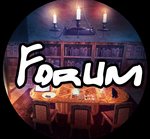The Quetzalcoatl [ creature from Mayan Mythology ]
2 posters
Page 1 of 1
![The Quetzalcoatl [ creature from Mayan Mythology ] Empty](https://2img.net/i/empty.gif) The Quetzalcoatl [ creature from Mayan Mythology ]
The Quetzalcoatl [ creature from Mayan Mythology ]
THE QUETZALCOATL
Original Article Here
Quetzalcóatl
MESOAMERICAN GOD
WRITTEN BY: The Editors of Encyclopaedia Britannica
See Article History
Alternative Titles: Ce Acatl, Ehécatl, Feathered Serpent, Kukulcán, One Reed
Quetzalcóatl, Mayan name Kukulcán, (from Nahuatl quetzalli, “tail feather of the quetzal bird [Pharomachrus mocinno],” and coatl, “snake”), the Feathered Serpent, one of the major deities of the ancient Mexican pantheon. Representations of a feathered snake occur as early as the Teotihuacán civilization (3rd to 8th century CE) on the central plateau. At that time Quetzalcóatl seems to have been conceived as a vegetation god—an earth and water deity closely associated with the rain god Tlaloc.
![The Quetzalcoatl [ creature from Mayan Mythology ] Quetzalcoatl-Temple-of-Mexico-Teotihuacan](https://cdn.britannica.com/s:700x450/88/136488-050-9C5F0B67/Quetzalcoatl-Temple-of-Mexico-Teotihuacan.jpg)
Quetzalcóatl, stone carving on the Temple of Quetzalcóatl, Teotihuacán, Mexico.
:copyright: Gordon Galbraith/Shutterstock.com
With the immigration of Nahua-speaking tribes from the north, Quetzalcóatl’s cult underwent drastic changes. The subsequent Toltec culture (9th through 12th centuries), centred at the city of Tula, emphasized war and human sacrifice linked with the worship of heavenly bodies. Quetzalcóatl became the god of the morning and evening star, and his temple was the centre of ceremonial life in Tula.
![The Quetzalcoatl [ creature from Mayan Mythology ] Quetzalcoatl-stone-carving](https://cdn.britannica.com/s:700x450/30/147930-050-808C1DE8/Quetzalcoatl-stone-carving.jpg)
Quetzalcóatl, stone carving.
Photos.com/Thinkstock
In Aztec times (14th through 16th centuries) Quetzalcóatl was revered as the patron of priests, the inventor of the calendar and of books, and the protector of goldsmiths and other craftsmen; he was also identified with the planet Venus. As the morning and evening star, Quetzalcóatl was the symbol of death and resurrection. With his companion Xolotl, a dog-headed god, he was said to have descended to the underground hell of Mictlan to gather the bones of the ancient dead. Those bones he anointed with his own blood, giving birth to the men who inhabit the present universe.
![The Quetzalcoatl [ creature from Mayan Mythology ] Dance-Aztec-Codex-Borbonicus-detail-Xolotl-Quetzalcoatl](https://cdn.britannica.com/69/42169-050-33D1516C/dance-Aztec-Codex-Borbonicus-detail-Xolotl-Quetzalcoatl.jpg)
Aztec round dance for Quetzalcóatl and Xolotl (a dog-headed god who is Quetzalcóatl's companion), detail from a facsimile Codex Borbonicus (folio 26), c. 1520; original in the Chamber of Deputies, Paris.
One important body of myths describes Quetzalcóatl as the priest-king of Tula, the capital of the Toltecs. He never offered human victims, only snakes, birds, and butterflies. But the god of the night sky, Tezcatlipoca, expelled him from Tula by performing feats of black magic. Quetzalcóatl wandered down to the coast of the “divine water” (the Atlantic Ocean) and then immolated himself on a pyre, emerging as the planet Venus. According to another version, he embarked upon a raft made of snakes and disappeared beyond the eastern horizon.
The legend of the victory of Tezcatlipoca over the Feathered Serpent probably reflects historical fact. The first century of the Toltec civilization was dominated by the Teotihuacán culture, with its inspired ideals of priestly rule and peaceful behaviour. The pressure of the northern immigrants brought about a social and religious revolution, with a military ruling class seizing power from the priests. Quetzalcóatl’s defeat symbolized the downfall of the Classic theocracy. His sea voyage to the east should probably be connected with the invasion of Yucatán by the Itzá, a tribe that showed strong Toltec features. Quetzalcóatl’s calendar name was Ce Acatl (One Reed). The belief that he would return from the east in a One Reed year led the Aztec sovereign Montezuma II to regard the Spanish conqueror Hernán Cortés and his comrades as divine envoys, because 1519, the year in which they landed on the Mexican Gulf coast, was a One Reed year.
In addition to his guise as a plumed serpent, Quetzalcóatl was often represented as a man with a beard, and, as Ehécatl, the wind god, he was shown with a mask with two protruding tubes (through which the wind blew) and a conical hat typical of the Huastec people of east-central Mexico. The temple of Quetzalcóatl at Tenochtitlán, the Aztec capital, was a round building, a shape that fitted the god’s personality as Ehécatl. Circular temples were believed to please Ehécatl because they offered no sharp obstacles to the wind. Round monuments occur particularly often in Huastec territory.
Quetzalcóatl ruled over the days that bore the name ehécatl (“wind”) and over the 18th 13-day series of the ritual calendar. He was also the ninth of the 13 gods of the daytime hours. Although he was generally listed as one of the first-rank deities, no ceremonial month was dedicated to his cult.
As the god of learning, of writing, and of books, Quetzalcóatl was particularly venerated in the calmecac, religious colleges annexed to the temples, in which the future priests and the sons of the nobility were educated. Outside of Tenochtitlán, the main centre of Quetzalcóatl’s cult was Cholula, on the plateau region called Mesa Central.
The Editors of Encyclopaedia Britannica
This article was most recently revised and updated by Adam Augustyn, Managing Editor.
The legend of the victory of Tezcatlipoca over the Feathered Serpent probably reflects historical fact. The first century of the Toltec civilization was dominated by the Teotihuacán culture, with its inspired ideals of priestly rule and peaceful behaviour. The pressure of the northern immigrants brought about a social and religious revolution, with a military ruling class seizing power from the priests. Quetzalcóatl’s defeat symbolized the downfall of the Classic theocracy. His sea voyage to the east should probably be connected with the invasion of Yucatán by the Itzá, a tribe that showed strong Toltec features. Quetzalcóatl’s calendar name was Ce Acatl (One Reed). The belief that he would return from the east in a One Reed year led the Aztec sovereign Montezuma II to regard the Spanish conqueror Hernán Cortés and his comrades as divine envoys, because 1519, the year in which they landed on the Mexican Gulf coast, was a One Reed year.
In addition to his guise as a plumed serpent, Quetzalcóatl was often represented as a man with a beard, and, as Ehécatl, the wind god, he was shown with a mask with two protruding tubes (through which the wind blew) and a conical hat typical of the Huastec people of east-central Mexico. The temple of Quetzalcóatl at Tenochtitlán, the Aztec capital, was a round building, a shape that fitted the god’s personality as Ehécatl. Circular temples were believed to please Ehécatl because they offered no sharp obstacles to the wind. Round monuments occur particularly often in Huastec territory.
Quetzalcóatl ruled over the days that bore the name ehécatl (“wind”) and over the 18th 13-day series of the ritual calendar. He was also the ninth of the 13 gods of the daytime hours. Although he was generally listed as one of the first-rank deities, no ceremonial month was dedicated to his cult.
As the god of learning, of writing, and of books, Quetzalcóatl was particularly venerated in the calmecac, religious colleges annexed to the temples, in which the future priests and the sons of the nobility were educated. Outside of Tenochtitlán, the main centre of Quetzalcóatl’s cult was Cholula, on the plateau region called Mesa Central.
The Editors of Encyclopaedia Britannica
This article was most recently revised and updated by Adam Augustyn, Managing Editor.

Silver Black- Owner

- Kin/Therio type : Naerubie ( celestial wolf guardian )
Age : 33
Job/hobbies : Comission Artist, Gamer, Singer, working at my own terms.
Join date : 2016-06-24
Your Kin self Information Sheet
Name of your kin self : : Silver Black
What is your kin type ? : Naerubie ( Interdimensional Angel Wolf being )
Describe it Physically : : winged wolf with avian features -

![The Quetzalcoatl [ creature from Mayan Mythology ] Empty](https://2img.net/i/empty.gif) Re: The Quetzalcoatl [ creature from Mayan Mythology ]
Re: The Quetzalcoatl [ creature from Mayan Mythology ]
Quetzalcoatl is a Primordial God, usually associated with life, the sun, and the heavens while his twin brother Tezcatlipoca with the underworld, death, the moon. Although, sometimes they tend to switch places since they both were said to have sibling rivalries from time to time lol.

Liudan- Kin/Therio type : Divinekin
Job/hobbies : Energy work and ESP
Join date : 2016-06-28
Your Kin self Information Sheet
Name of your kin self : : Nature
What is your kin type ? :
Describe it Physically : :
![The Quetzalcoatl [ creature from Mayan Mythology ] Empty](https://2img.net/i/empty.gif) Re: The Quetzalcoatl [ creature from Mayan Mythology ]
Re: The Quetzalcoatl [ creature from Mayan Mythology ]
I read a girl once and she was a quetzalcoatl so idk how many of them are there.
i saw a mayan like planet with jungle and aliens visiting earth, humanoid people with wings. i had many visions of these guardian like creatures that the humans saw as gods and all.
what do you think bout all this ?
i saw a mayan like planet with jungle and aliens visiting earth, humanoid people with wings. i had many visions of these guardian like creatures that the humans saw as gods and all.
what do you think bout all this ?

Silver Black- Owner

- Kin/Therio type : Naerubie ( celestial wolf guardian )
Age : 33
Job/hobbies : Comission Artist, Gamer, Singer, working at my own terms.
Join date : 2016-06-24
Your Kin self Information Sheet
Name of your kin self : : Silver Black
What is your kin type ? : Naerubie ( Interdimensional Angel Wolf being )
Describe it Physically : : winged wolf with avian features -

![The Quetzalcoatl [ creature from Mayan Mythology ] Empty](https://2img.net/i/empty.gif) Re: The Quetzalcoatl [ creature from Mayan Mythology ]
Re: The Quetzalcoatl [ creature from Mayan Mythology ]
There's only one Quezocoatl, however, like most Gods they have their own races, as for the planet, not sure, there are Deities who have their own realms and some go as far to find uninhabited planetary bodies to bring life and fauna and such to it.

Liudan- Kin/Therio type : Divinekin
Job/hobbies : Energy work and ESP
Join date : 2016-06-28
Your Kin self Information Sheet
Name of your kin self : : Nature
What is your kin type ? :
Describe it Physically : :
 Similar topics
Similar topics» Hellhounds in Mythology
» Mythical Creature : The Einfield
» Specie Information: Naerubie, the Avian wolf creature
» Mythical Creature : The Einfield
» Specie Information: Naerubie, the Avian wolf creature
Page 1 of 1
Permissions in this forum:
You cannot reply to topics in this forum






